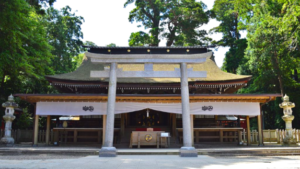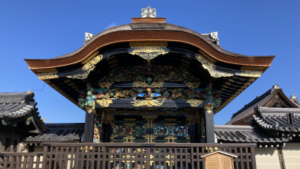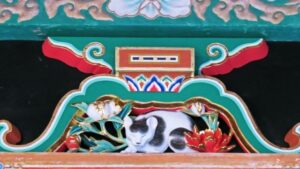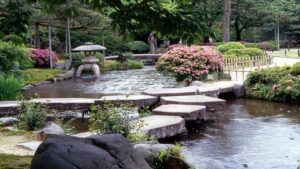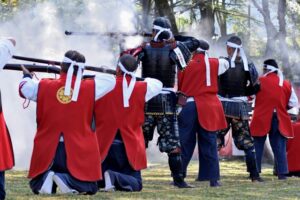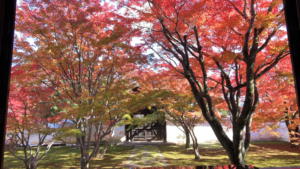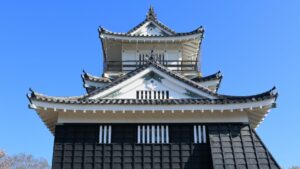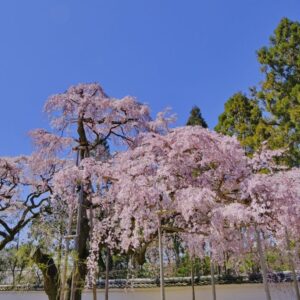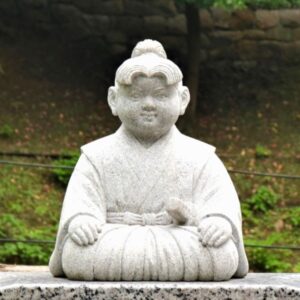Kashima Jingu Shrine Enshrines the Diety of War, Takemikazuchi
Kashima Jingu Shrine in Ibaraki prefecture Enshrines the Diety of War, Takemikazuchi
Three Karamon Gates Reflect Hideyoshi's Authority as a Ruler
Kyoto is home to three national treasures of Karamon Gates at Daitokuji Temple, Nishi-Hongwanji Temple, and Toyokuni Shrine. These gates were relocated from Toyotomi Hideyoshi’s retreats, Jurakudai and Fushimi Castles. Toyotomi Hideyoshi (1537–1598, 豊臣秀吉) ended over a century of warlike period in Japan. The Karamon Gates feature the distinctive Karahafu, an undulating bargeboard on the […]
Nikko Toshogu Shrine, Seeking a Peaceful World Even After Death
Nikko Toshogu Shrine enshrines the spirit of Tokugawa Ieyasu, who laid the foundation for a peaceful era that lasted for 260 years. After settling the turbulent era, Ieyasu's ambition was to secure lasting prosperity and national peace. He faced many adversities in his life: fourteen-year hostage and Ikko-riot of the Jodo Shinsu sect of Buddhism […]
Kenrokuen, a Scenic Garden, the Maeda Clan's Survival Strategy
Kenrokuen garden in Kanazawa is a symbol of Maeda Toshiie, Toshinaga, and Toshitsune, the great lords who protected Kaga's one million koku domain against the Tokugawa Shogunate. Thier strategy was brilliant.
Okehazama Battlefield: Genius, Nobunaga's Victory
"Charge!, Charge!" Oda Nobunaga (1534-1582, 織田信長) ordered the fierce charge to his elite troops on the headquarters of Imagawa Yoshimoto. On May 19, 1560, a pivotal event occurred in Japanese history as Imagawa Yoshimoto (1519-1560, 今川義元), renowned as the greatest archer of the Tokaido region and a prominent feudal lord, was defeated by 2,000 elite […]
The Battle of Nagashino and Shitaragahara
On May 21, 1575, the decisive battle at Nagashino and Shitaragahara began between Takeda Katsuyori’s forces (1546-1582, 武田勝頼), numbering 15,000 forces, and the 38,000-strong allied forces of Oda Nobunaga (1534-1582, 織田信長) and Tokugawa Ieyasu (1543-1616, 徳川家康). The Takeda forces charged towards the 2-km-long fence constructed by the allies. For nine relentless hours, the Takeda forces […]
Myokakuji Temple, Nobunaga's Innovative Venue for Tea Ceremonies
Oda Nobunaga held his tea ceremonies at Myokakuji Temple, his lodging during his stay in Kyoto. Here, Nobunaga and Sen-no-Rikyu met. The two innovators began to resonate with each other in their rational minds. Nobunaga appointed Rikyu as the tea master for the tea ceremony held at Myokakuji Temple in 1573. Encounter between Nobunaga and […]
Hamamatsu Castle, Ieyasu's Journey of Building a Peaceful Era
Tokugawa Ieyasu (1543-1616, 徳川家康) was freed from his hostage of Imagawa Yoshimoto (1519-1560, 今川義元) defeated at the Battle of Okehazama, and took a step forward as the lord of Okazaki Castle. He put down the Mikawa Ikki riot and brought stability to the Mikawa region in 1645. Following the surrender of the Imagawa clan's Sunpu […]
Daigoji Temple, Cherry Blossoms Honoring Hideyoshi's Unification of Japan
Daigoji Temple, a World Heritage Site, has been known as Hana-no-Daigo (Cherry Blossom Flower Daigo) since the Heian period (794-1185), and some 700 cherry blossoms are in full bloom in spring, including weeping, Someiyoshino, mountain, and double-flowered cherry trees. The temple consists of several sub-temples and gardens spreading across a vast area of Mt. Daigo […]
Okazaki Castle, Hardship Made the Man: Tokugawa Ieyasu
Tokugawa Ieyasu (1543-1616, 徳川家康) was separated from his mother at the age of 3, became a hostage of Oda Nobuhide, father of Oda Nobunaga (1534-1582, 織田信長) at the age of 6, lost his father at the age of 8, then became a hostage of the Imagawa Yoshimoto (1519-1560, 今川義元). In total, he spent about 14 years […]

